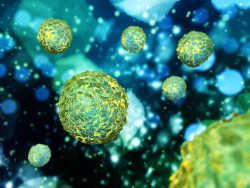 Hematopoietic stem cells (HSCs) have a remarkable longevity compared to other cells in the body. These are the cells responsible for forming blood. They produce progenitor cells that rapidly divide and generate hundreds of billions of cells each day. These cells are essential for meeting the body’s daily needs, from oxygen-transporting red blood cells and immune-defending white blood cells to clot-producing platelets.
Hematopoietic stem cells (HSCs) have a remarkable longevity compared to other cells in the body. These are the cells responsible for forming blood. They produce progenitor cells that rapidly divide and generate hundreds of billions of cells each day. These cells are essential for meeting the body’s daily needs, from oxygen-transporting red blood cells and immune-defending white blood cells to clot-producing platelets.
Typically inactive within the bone marrow, hematopoietic stem cells (HSCs) can spring into action to continuously regenerate blood cells, helping to maintain their youthful function over an organism’s lifespan. What is the key to their longevity? Researchers have discovered that cyclophilin A, an enzyme produced in high levels by HSCs, plays a critical role in preserving their ability to regenerate and resist the aging process.
A major factor in cellular aging is the buildup of proteins that are no longer functional. As cells age, proteins are prone to misfolding, aggregating, and accumulating within the cell, creating toxic stress that impairs cell function. Cells that divide regularly, such as progenitor cells, can mitigate this buildup by diluting protein aggregates during cell division. However, long-lived hematopoietic stem cells (HSCs), which seldom divide, encounter the challenge of accumulated misfolded proteins and the resulting toxic stress. Despite this, HSCs continue to resist the effects of aging.
In their study with mice, researchers initially analyzed the protein composition of hematopoietic stem cells (HSCs) and identified cyclophilin A as a common chaperone protein. They found that the levels of cyclophilin A were notably reduced in older HSCs. When cyclophilin A was genetically removed, it led to accelerated aging in the stem cell population. Conversely, reintroducing cyclophilin A into older HSCs improved their functionality. These results underscore the crucial role of cyclophilin A in maintaining the longevity of HSCs.
Following this, the researchers examined the proteins that interact with cyclophilin A, focusing on how it helps maintain their stability. They discovered that proteins featuring intrinsically disordered regions, which can shift their three-dimensional shapes to bind with various proteins, nucleic acids, or molecules, are often stabilized by cyclophilin A. These intrinsically disordered proteins play a crucial role in regulating cellular processes by facilitating targeted interactions between molecules.
The study indicates that cyclophilin A engages with intrinsically disordered proteins right from their synthesis, ensuring they adopt the correct shapes and are present in adequate amounts. Removing cyclophilin A genetically leads to a noticeable deficiency of intrinsically disordered proteins in stem cells. This research reveals for the first time that the production of disordered proteins and the preservation of their structural variety within cells are critical factors in the aging of hematopoietic stem cells (HSCs).
To view the original scientific study click below:
Cyclophilin A supports translation of intrinsically disordered proteins and affects haematopoietic stem cell ageing





